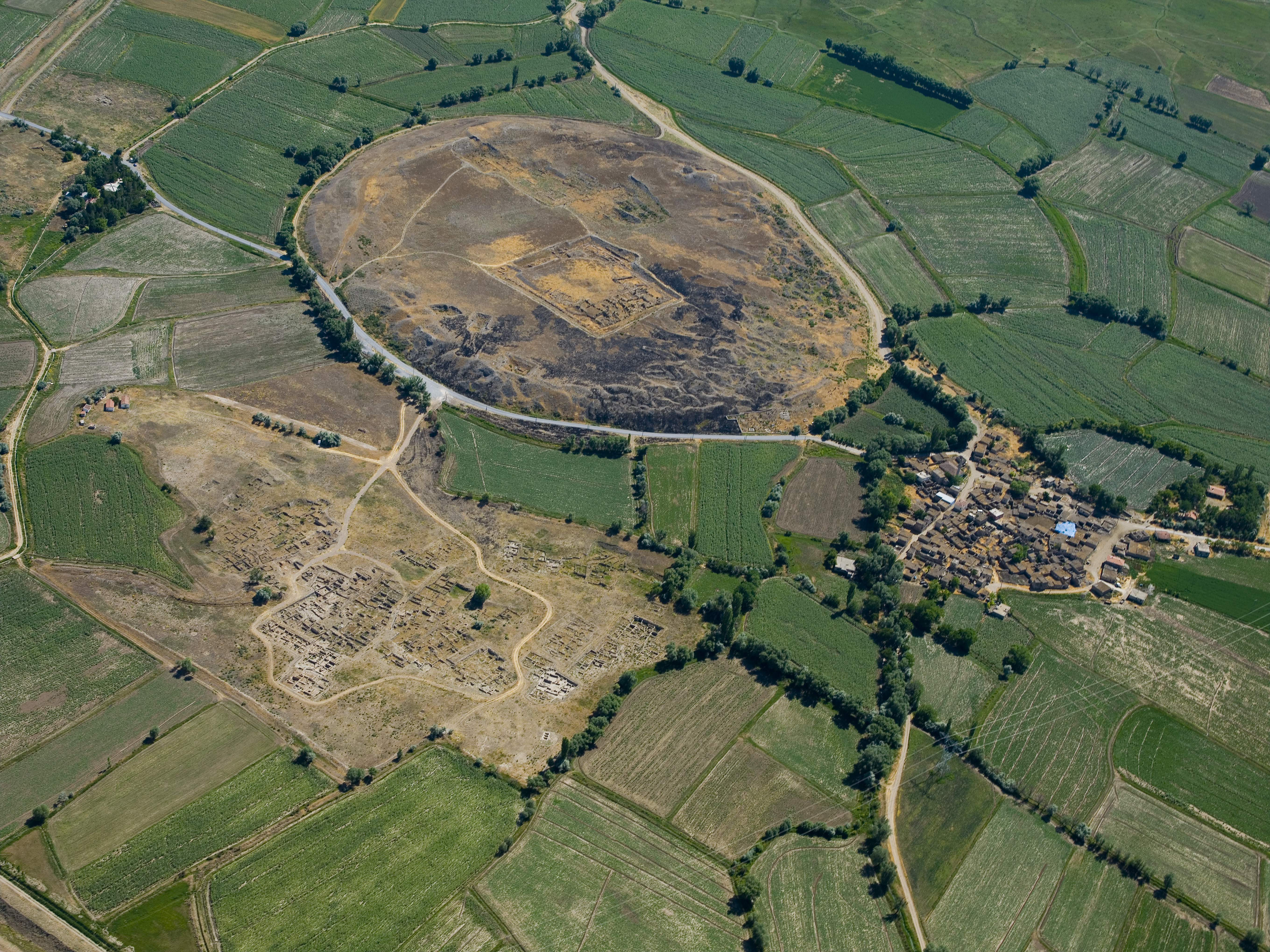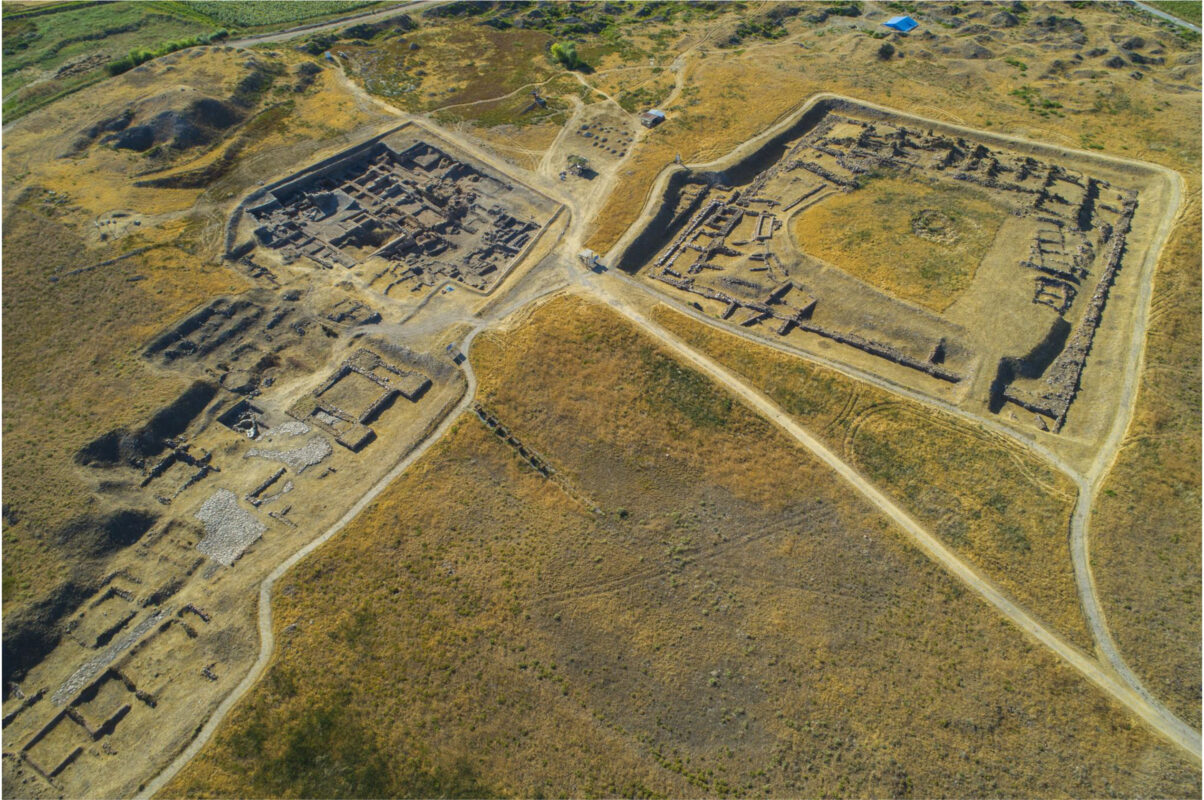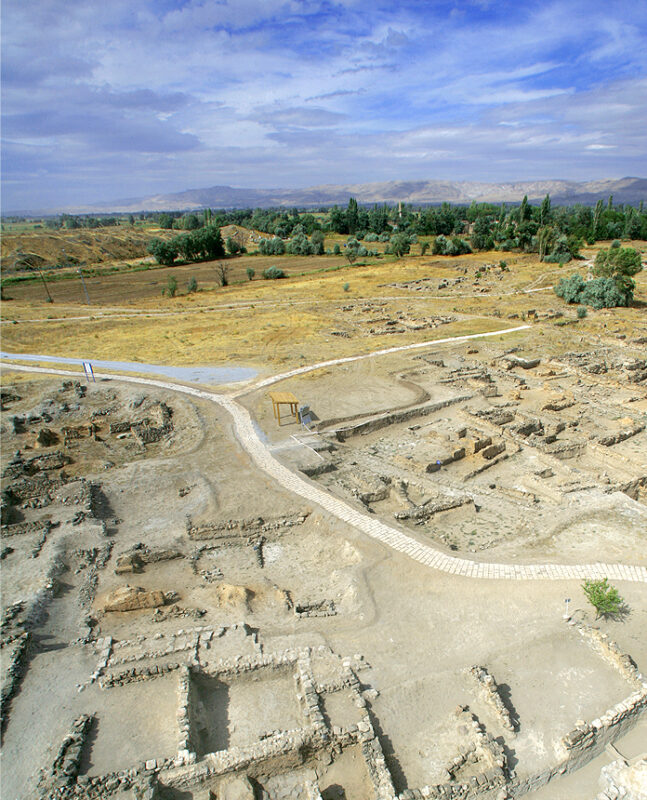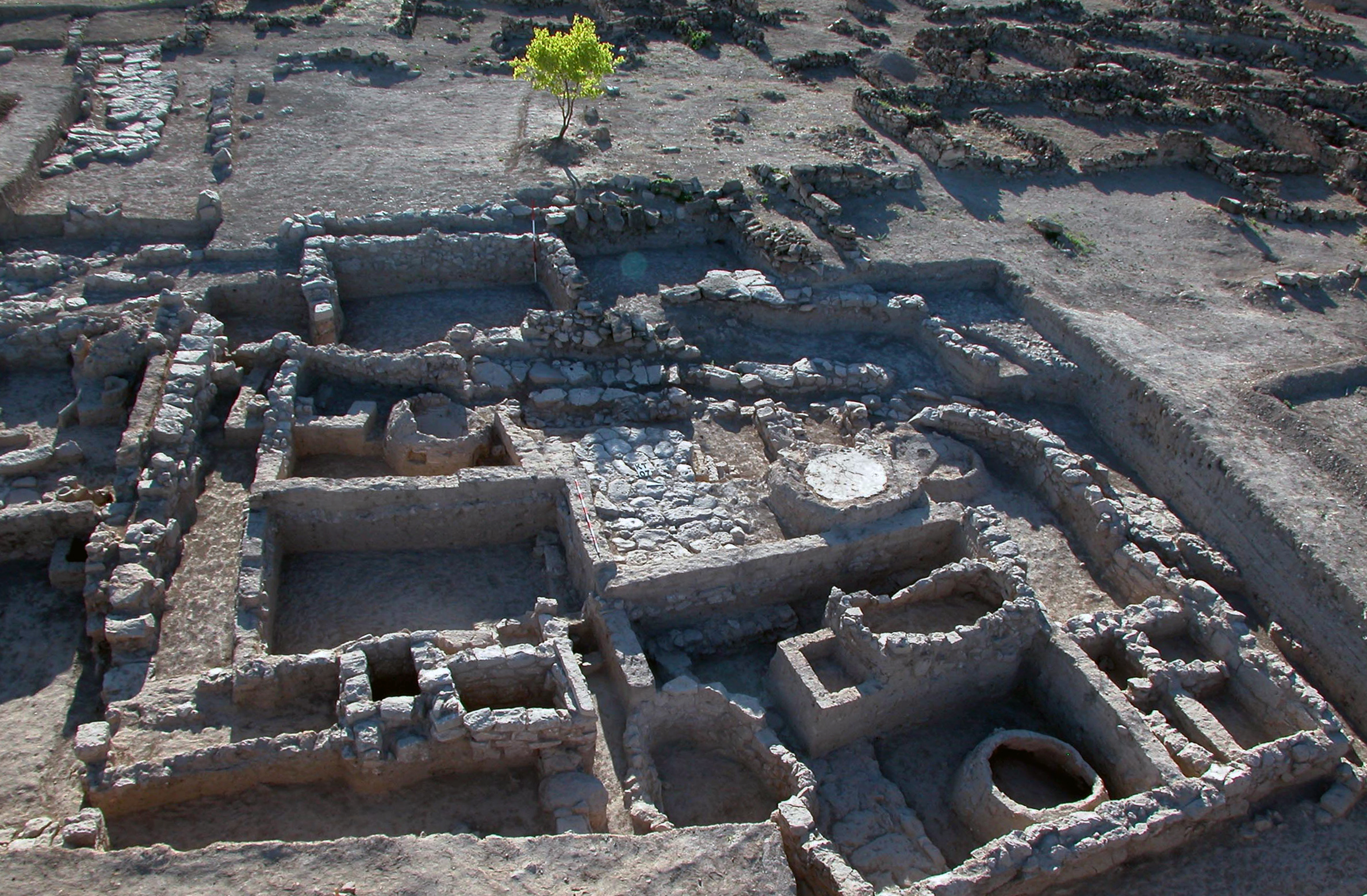Kültepe, the ancient city of Kanesh/Nesha
The site of Kültepe, located in Cappadocia in the province of Kayseri, corresponds to the ancient city of Kanesh/Nesha.
The settlement is divided into two main and distinct areas: a circular mound, 21 meters high and approximately 23 hectares wide, which was inhabited intermittently from the Early Bronze Age (mid-3rd millennium BC) to the Hellenistic-Roman Period, and a lower town, which was occupied only during the Middle Bronze Age (first half of the 2nd millennium BC).
Kültepe already maintained close commercial ties since the Early Bronze Age with other regions of the Anatolian plateau, Syria, and northern Mesopotamia. However, it was at the beginning of the Middle Bronze Age, coinciding with the development and progression of the Old Assyrian trade, that the city reached its peak, acquiring a clear urban dimension. In fact, the mound underwent a profound reorganization with the construction of important public buildings connected by a large stone-paved square. These included two temple buildings, associated with cultic structures made of stone, a palace located on the southern terrace, a series of auxiliary structures, as well as residential buildings of the local elite.
Simultaneously, at the foot of the mound, the lower town emerged with an Assyrian commercial district (kārum) which was inhabited by merchants from the capital Assur, in present-day northern Iraq. The lower town presents four architectural phases, with the earliest one attested only through ephemeral traces. The phase known as kārum II (Middle Bronze I) is the richest and best documented, as tens of thousands of cuneiform tablets (around 23,000 specimens) have been found here in the archives of the merchants’ houses, which testify to the intensity and nature of the trade. This trade primarily involved precious metals—gold and silver—coming from Anatolia and destined for Assyria, as well as goods such as textiles and tin imported from Assyria and introduced into Anatolian trade networks.
Following a fire dated to the late 19th century BC, the lower town was rebuilt, and trade with northern Mesopotamia resumed, albeit on a reduced scale. The difficulties in maintaining these commercial exchanges are explained by a context of profound political changes in Central Anatolia, shaken by continuous rivalries between city-states, which ultimately led to the abandonment of the entire settlement throughout the Late Bronze Age.
An emblematic clue of this last phase is the Text of Anitta which, despite its propagandistic nature, is an account of the military expansion initiated from peripheral areas and conducted by Anitta himself to quell revolts and conquer strategic cities, incuding Kültepe, at the end of the 18th century BC. Despite the city’s progressive loss of economic and political importance, its cultural influence persisted even during the subsequent Hittite Empire, not only materially but also linguistically: Hittite was in fact called nešili, meaning “the language of Nesha/Kanesh.”





